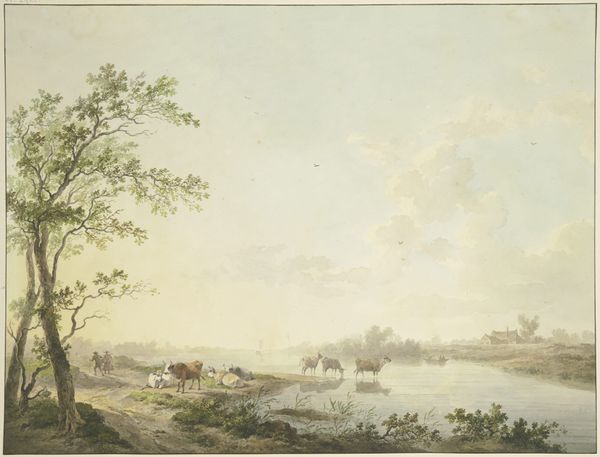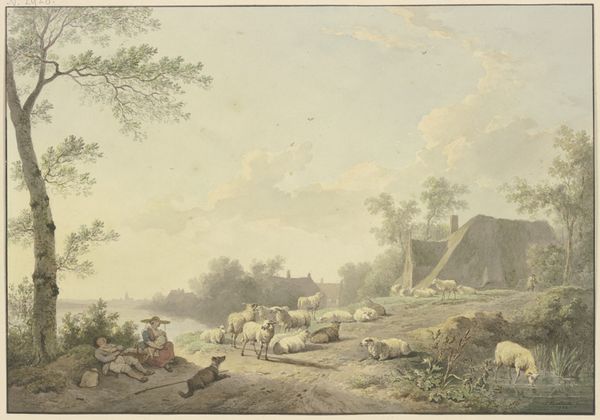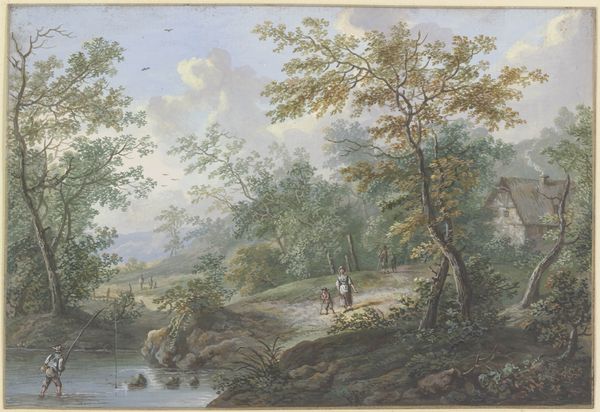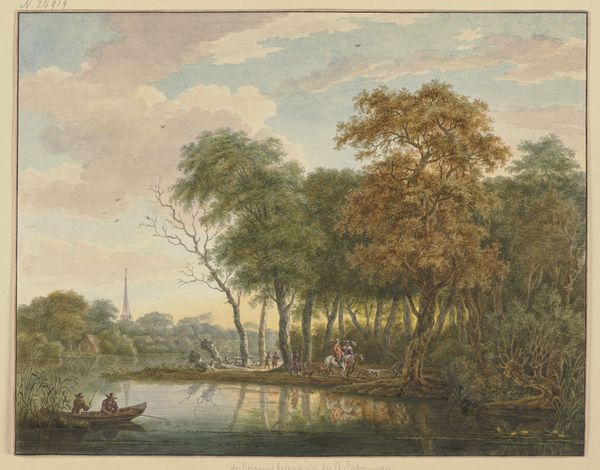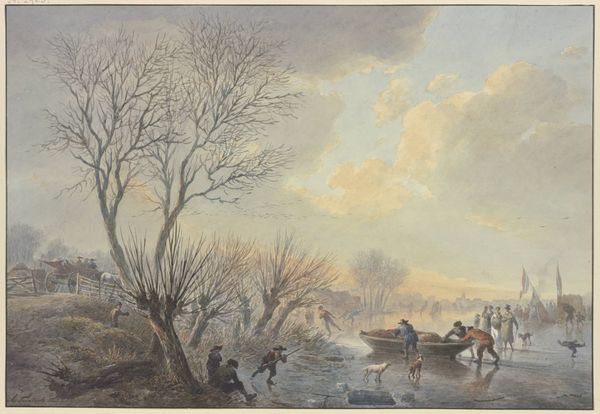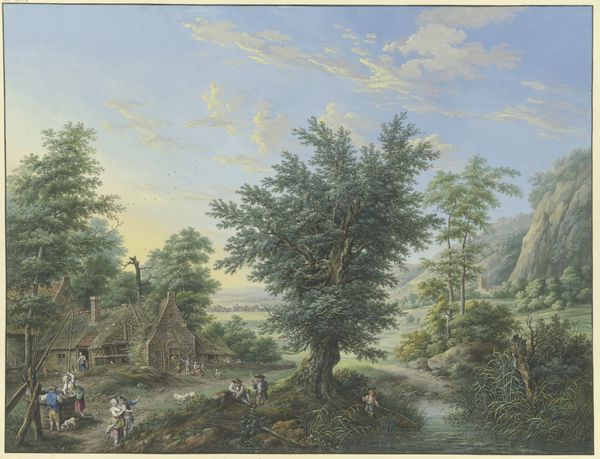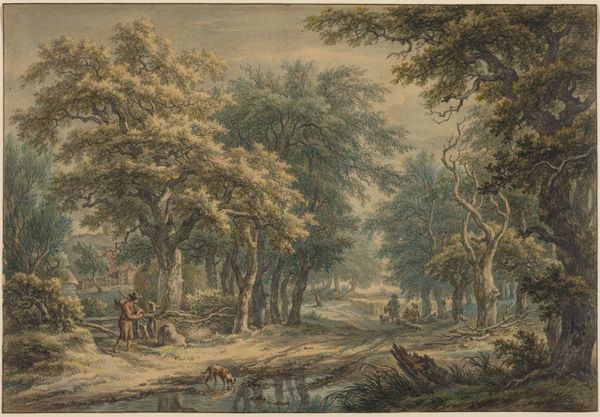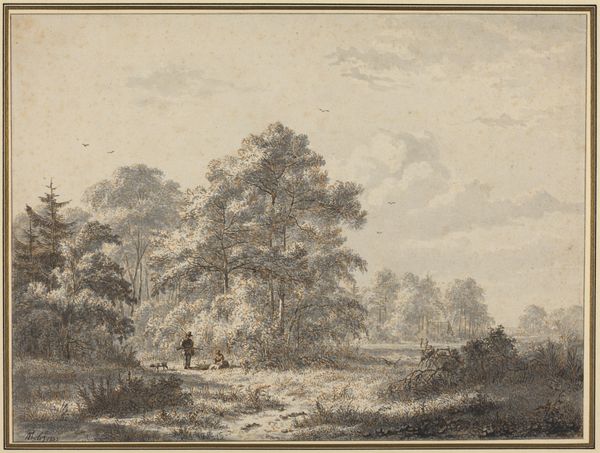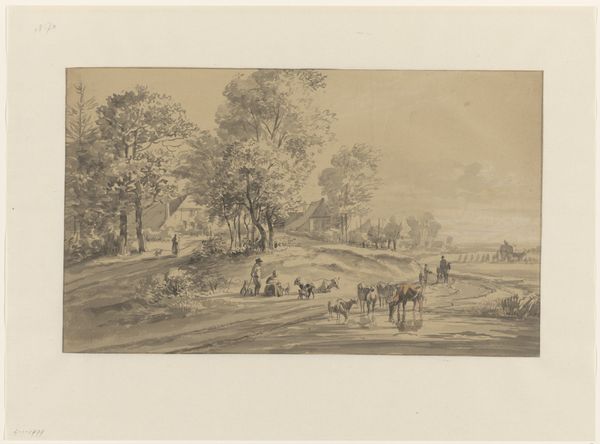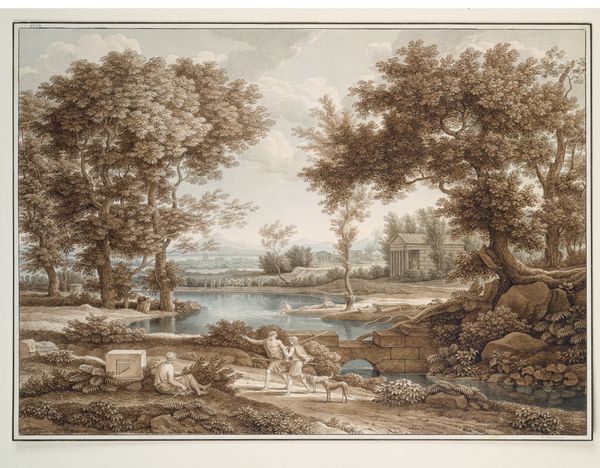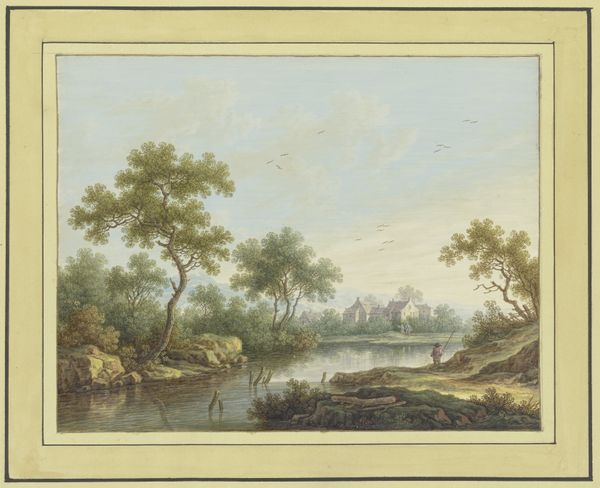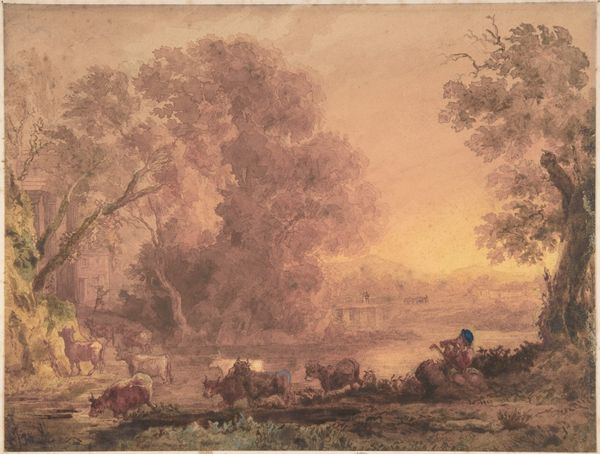
Links begegnet ein Schafhirte einem Milchmädchen, rechts in einem Kahn drei Fischer, und einer in Uniform hinter einem Weidenbaum
0:00
0:00
drawing, coloured-pencil, watercolor, ink, indian-ink
#
drawing
#
coloured-pencil
#
dutch-golden-age
#
landscape
#
figuration
#
watercolor
#
ink
#
coloured pencil
#
indian-ink
#
genre-painting
#
academic-art
#
watercolor
#
realism
Copyright: Public Domain
Curator: Here we have a drawing by Abraham Teerlink entitled, "Links begegnet ein Schafhirte einem Milchmädchen, rechts in einem Kahn drei Fischer, und einer in Uniform hinter einem Weidenbaum," housed here at the Städel Museum. Editor: It's wonderfully serene, isn’t it? A classic pastoral scene with gentle colors, almost monochromatic in its hazy greens and blues. It evokes a strong sense of nostalgic tranquility. Curator: Teerlink was working in the academic style prevalent at the time, drawing from both the Dutch Golden Age tradition and broader European Realism. Think about the role that genre painting served – a kind of stage for examining social structures. What do you make of the figures populating this scene? Editor: Absolutely. The shepherd and milkmaid embody the idealized rural existence that often romanticized peasant labor. Yet, to truly dissect it, we need to question this idealized representation. Is it a reflection of actual social realities or more of an aspirational, perhaps even constructed, vision of a simple life? And that lone figure in uniform behind the tree—are we meant to perceive him as a symbol of authority, silently observing this tranquil existence? Curator: Precisely! Notice how the artist places them within a neatly ordered landscape. These aren't just casual encounters. The inclusion of the soldier raises interesting questions. What does the artist want us to infer from the silent military presence juxtaposed with these workers? What narrative is he creating about social hierarchies or impending political tensions through that imagery? Editor: And we mustn't overlook the composition itself! The balanced arrangement—the shepherd on the left, the fishermen on the right—further emphasizes a sort of societal balance or even segregation of labor, doesn't it? What about the interplay between these figures and their landscape setting, or even about how institutional forces shaped Teerlink's perspectives on rural life. Curator: It is also rendered with such delicacy; look at the fineness of the lines in the trees achieved through a combination of ink, colored pencil, and watercolor! This combination enables a detailed yet soft depiction that underscores its dreamlike essence. Editor: These sorts of images naturalized systems and offered a skewed depiction. We need to ask about what's absent – what perspectives or narratives are deliberately excluded to maintain that status quo? Curator: Yes, and considering that Abraham Teerlink had likely never lived a life of tending sheep. Editor: Understanding such omissions helps unveil how artistic representation impacts historical perception. A critical viewing pushes us to interrogate the idealized portrayal presented. Curator: Well said! It reveals so much when you begin to pull back those layers, doesn't it?
Comments
No comments
Be the first to comment and join the conversation on the ultimate creative platform.
